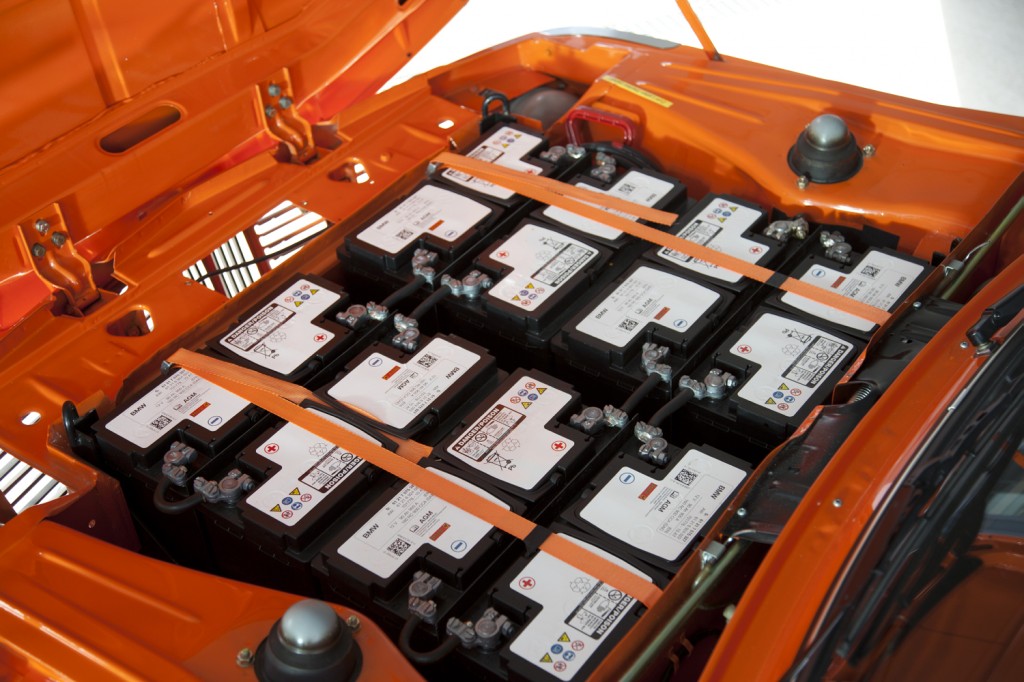Originally Posted By: HTSS_TR
Porsche(and all German engineers) couldn't design/engineer a battery power vehicle that could go 100 miles or more on a single charge.
Tesla pioneered the EV with a range of 200 miles between charge, German engineers and Porsche engineers particular did nothing other than copy Tesla vehicles(Roaster, model S and X) design to make their own.
BMW engineers did few battery power cars some years ago, with lead acid batteries (probably bought on sale from Walmart), that was all German engineers could think off. Batteries ? Walmart's clearance shelf is the best source.
As I said, copying is okay if you are not capable of thinking for yourself, but keep your mouth shut if you are copying someone else design.
If you think German engineers(and/or Porsche engineers) pioneered EV as we know it now, please post your reference.
I am truly tired of "German Engineered", all they are good for is cheating and copying.
That sounds like a lot of hyperbole and opinion and not a lot of fact. Germany has always been on the forefront of science and engineering (see WWII for example) and it is that approach that has led to less than stellar reliability at times with the consumer doing the "beta testing" so to speak.
Tesla IMPROVED the EV (and that's all they make) by using Lithium Ion batteries (which is most certainly not a technology they invented) which aided in providing the improved range. That's not a difficult concept to grasp.
Are you familiar with GM's EV1? If not, I suggest reading up on it:
https://en.wikipedia.org/wiki/General_Motors_EV1
It was the first mass-produced electric vehicle of the modern period and the 2nd generation had a range of around 100-140 miles, which, when considering it used a NIMH battery, was pretty bloody good.
Also, Mercedes was manufacturing electric busses as far back as the 1960's:
Originally Posted By: Wikipedia
Nonetheless, Mercedes-Benz engaged in intensive research and development of alternative propulsion systems in the 1960s. In 1969 the brand presented the OE302 electric bus. Two years later, a natural-gas-fuelled version of the O305 was unveiled, and in 1975 the OE302 duo bus went into trial operation in Esslingen, Germany. A minibus operated on pure hydrogen was demonstrated in 1977. In 1978 the hybrid electric OE305 was presented. The same year Mercedes-Benz do Brasil presented the OF-1315 front engine natural-gas-fuelled bus chassis for the Brazilian market. Other five duo buses went into trial operation in Esslingen the following year, two of them in battery/trolley operation and the other three in diesel/trolley operation. Also in 1979, Daimler-Benz sent a German-built O305 trolleybus to be tested on the São Paulo trolleybus system, Brazil, then one of the most extensive trolleybus systems in the western world. The O305 GT trolleybus would go into production in 1981. Also in 1981 a methanol-fuelled O305 was unveiled.
In 1983 methanol-drive Mercedes-Benz buses were tested in São Paulo, Brazil. Some time later, 40 natural-gas-fuelled Mercedes-Benz O364 rear-engine integral buses went into experimental operation in that city. Two of them used a mixture of soy oil, ethanol and B-Diesel as fuel. In the following year Mercedes-Benz do Brasil unveil the OH-1315, a natural-gas-fuelled rear-engine bus chassis, and the O371 integral bus range for the Brazilian market, including a natural-gas integral urban bus and a trolleybus. In 1986 experiments were made in Europe with an articulated duo bus (diesel/electric) based on the O405. The O405 trolleybus was presented in that same year.
In 1984, a trial was carried out with a four O305 buses already in use in Auckland, New Zealand, with two powered by liquid petroleum gas and two powered by compressed natural gas (CNG). At the same time, two Volvo B10M buses were converted to run on methanol. All six, as well as a further 50 O303 and O305 buses, were all put onto CNG. Auckland City had a fleet of one hundred O303 buses and three hundred O305 buses.
In the 1990s three new natural-gas-powered models were unveiled by Mercedes-Benz: the O405 GN GNG low-floor articulated bus, which was Europe's first natural gas low-floor city bus; the O405 NG solo city bus and the O405 ÜNG for rural service. All models were fitted with the M-447 hG engine that was exported from Brazil.
In 1994 a prototype of a low-floor articulated duo bus based on the O405 - the O405 GNTD - was presented, featuring electric hub motors.
In 1996 the OH-1315 natural-gas bus chassis is succeeded by the OH-1621 LG, also natural-gas-powered. One year later, the OH-1621 LG was equipped with an electronic-managed engine as standard.
In 1997 Daimler-Benz presented its first fuel-cell bus, designated NEBUS (New Electric Bus), based on the O405 urban bus. It was the world's first fully operational fuel-cell-powered bus. Another fuel-cell-powered was developed later, based on the Citaro. Exemplars of the Citaro Fuel Cell bus are currently being tested in Europe, China and Australia.


